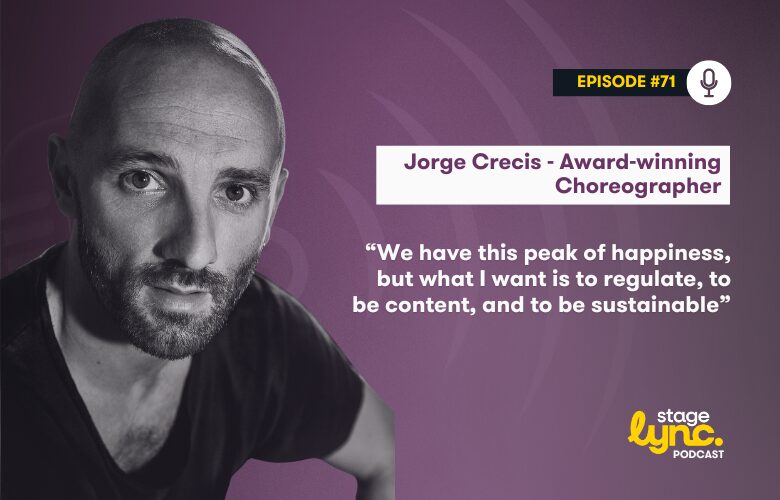StageLync Podcast Ep. 71: Jorge Crecis on Training the Nervous System for Peak Performance

In this episode of the StageLync Podcast, we sit down with Jorge Crecis — choreographer, researcher, and creator of Fullness, a cognitive training method designed to optimize presence and performance. With a background spanning sports science, dance, and neuroscience, Jorge has worked with elite athletes and performers around the world to strengthen their nervous systems, regulate stress, and sharpen focus. He shares his journey into unlocking human potential, the science behind daily regulation practices, and how artists can sustain clarity and peak performance in an overstimulated world.
Jorge Crecis has a degree in Sport Sciences, trained at the Royal Conservatory of Madrid, holds a PhD from Goldsmiths University and a Master’s in Elite Athletes Coaching. Former professional dancer and university lecturer, Jorge is an award-winning choreographer commissioned by companies including Birmingham Royal Ballet and Acosta Danza. He now coaches dancers and elite athletes worldwide through Fullness, a cognitive training method for peak performance and presence. He is the author ofDesigning Presence: Entering Towards Vivencia, and was featured inFifty Contemporary Choreographers.
ATTENTION SPOTIFY LISTENERS: IF you want to WATCH this with VIDEO, you can also subscribe to our video version.
Subscribe to the StageLync Podcast:
and on Podchaser or, wherever you get your podcasts.
Credits for the StageLync Podcast
Host: Anna Robb
Editor: Rose Anne Fermocil
Music: Jeremy Willi
Design: Em Holt
Production Coordinator: Roselle Bernardo
Producers: Anna Robb and Andrea Honis
Also check out: StageLync Podcast Ep. 68: Natasha Tsakos – Show Maker — a visionary showmaker whose work fuses theatrical adventure, technology, and impact.
Editor's Note: At StageLync, an international platform for the performing arts, we celebrate the diversity of our writers' backgrounds. We recognize and support their choice to use either American or British English in their articles, respecting their individual preferences and origins. This policy allows us to embrace a wide range of linguistic expressions, enriching our content and reflecting the global nature of our community.
🎧 Join us on the StageLync Podcast for inspiring stories from the world of performing arts! Tune in to hear from the creative minds who bring magic to life, both onstage and behind the scenes. 🎙️ 👉 Listen now!



